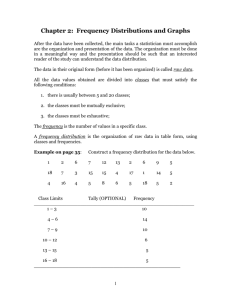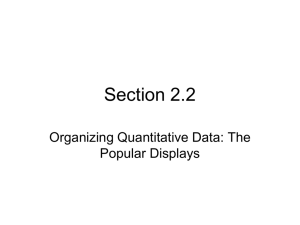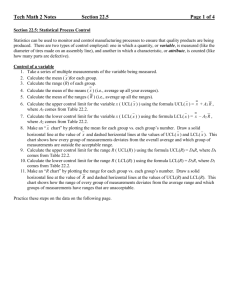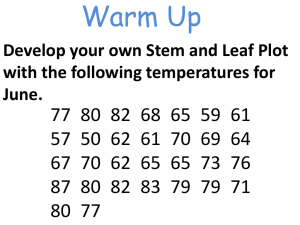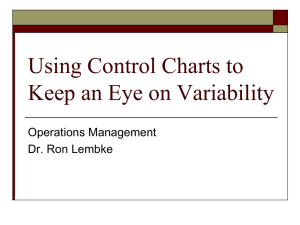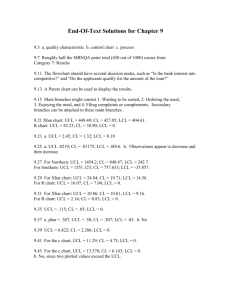Frequency Distributions & Graphs
advertisement
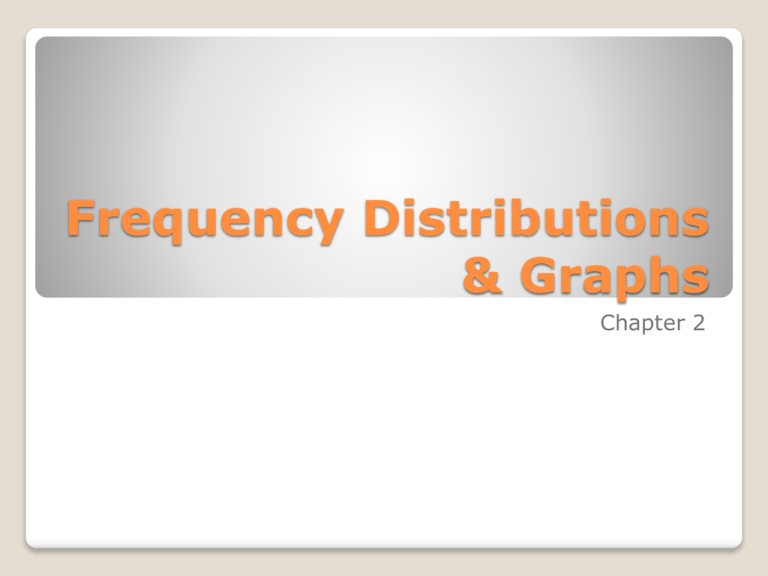
Frequency Distributions & Graphs Chapter 2 2-1 Introduction 2-2 Organizing Data 2-3 Histograms, Frequency Polygons, and Ogives 2-4 Other Types of Graphs 2-5 Summary Outline Statistics, in a broad sense, is a collection of methods for planning studies and experiments, gathering data, and then organizing, summarizing, presenting, and analyzing, interpreting, and drawing conclusions based on the data This chapter, along with Chapter 3, will present the basic tools we can use to conduct statistical studies. Section 2-1 Introduction To conduct a statistical study, we must gather data (values (measurements or observations) that variables can assume). ◦ Data collected in its original form is called RAW DATA Introduction To describe situations, draw conclusions, or make inferences about events, we must organize the data in some meaningful way. ◦ Most convenient method for organizing data is a FREQUENCY DISTRIBUTION After organizing the data, we must present them in a way that is easily understandable. STATISTICAL & GRAPHS are the most useful method for presenting data Introduction We will be discussing the following statistical charts and graphs ◦ ◦ ◦ ◦ ◦ ◦ Histograms Frequency Polygons Ogives Pareto Charts Time Series Graphs Stem & Leaf Plot Objectives ◦ Organize data using frequency distributions Section 2-2 Organizing Data A frequency distribution is the organization of raw data in table from, using classes and frequencies ◦ Class is a quantitative or qualitative category ◦ Frequency of a class is the number of data values contained in a specific class What is a Frequency Distribution? Categorical Frequency Distribution Used for data that can be used in specific categories, such as nominal or ordinal level data. Grouped Frequency Distribution Used with quantitative data Classes (groups) included more than one unit of measurement ◦ Examples: Political affiliations, religious affiliations, major field of study Types of Frequency Distributions Make a table Tally the data Count the tallies Find percentage of values in each class using the following formula: Class Tally Frequency % f % 100 n Find the grand totals for frequency & percent About Categorical Frequency Distributions Definitions ◦ Lower Class Limit (LCL) is the smallest data value that can be included in the class ◦ Upper Class Limit (UCL) is the largest data value that can be included in the class ◦ Class Boundaries are used to separate the classes so that there are no gaps in the classes included in the frequency distribution ◦ Class Width is the difference between two consecutive LCL Find by subtracting LCL2 –LCL1 About Grouped Frequency Distributions We must decide how many classes to use and the width of each class using the following guidelines: ◦ There should be between 5 and 20 classes. ◦ It is preferable, but not absolutely necessary that the class width be an odd number ◦ The classes must be mutually exclusive (nonoverlapping values) ◦ The classes must be continuous (no gaps, even if frequency is 0) ◦ The classes must be exhaustive (use all the data) ◦ The classes must be equal in width Grouped Frequency Distribution Decide on the number of classes (given) Determine the class width (given) Select a starting point (this is the first LCL) (given) Determine the LCL by adding the class width to first LCL to determine next LCL, ….. Determine the UCL by subtracting 1 from second LCL to obtain first UCL, then add class width to determine next UCL….. Tally the data Grouped Frequency Distribution Ages of NASCAR Nextel Cup Drivers in Years (NASCAR.com) (Data is ranked---Collected Spring 2008) 21 21 21 23 23 23 24 25 25 26 26 26 26 27 27 28 28 28 28 29 29 29 29 30 30 30 30 31 31 31 31 31 32 34 35 35 35 36 36 37 37 38 38 39 41 42 42 42 43 43 43 44 44 44 44 45 45 46 47 48 48 48 49 49 49 50 50 51 51 65 72 Example-Construct a frequency distribution of the ages of Cup Drivers. Use 6 classes beginning with a lower class limit of 20 and class width of 10 To organize data in a meaningful, intelligible way To enable the reader to determine the nature or shape of the distribution To facilitate computational procedures for measures of average and spread To enable us to draw charts and graphs for the presentation of data To enable the reader to make comparisons among different data sets Reasons for Constructing a Frequency Distribution
